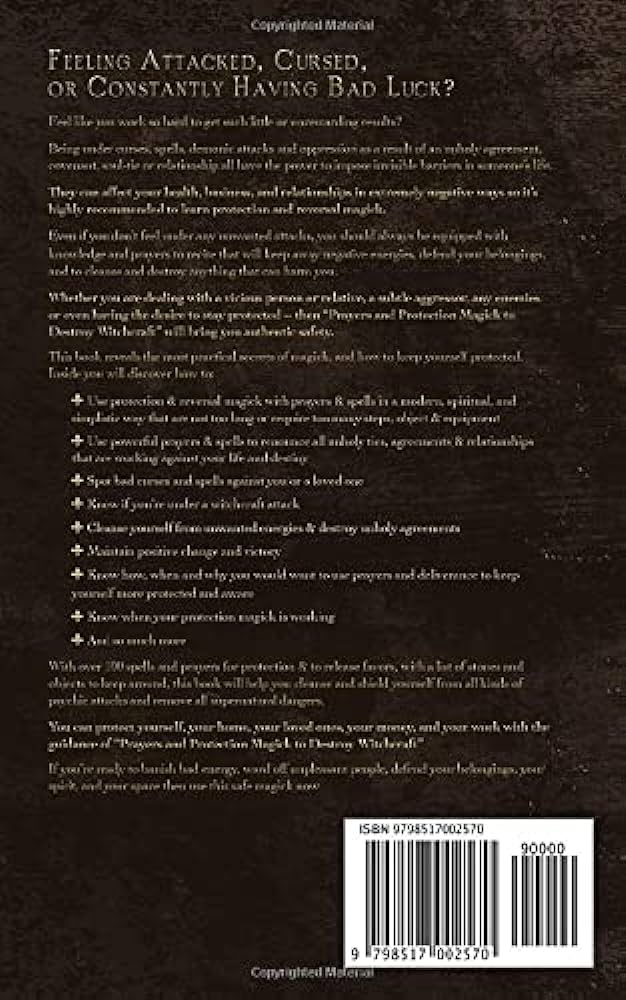To kill a demon, one typically needs a blend of supernatural power and specific rituals. Items of sacred significance are often required to banish the demonic entity.
Exploring the realm of supernatural entities, the concept of defeating a demon has fascinated and terrified people for centuries. Cultures from all over the world have developed unique methods for confronting these malevolent beings, often involving a combination of spiritual strength and sacred rituals.
Killing or banishing a demon isn’t as simple as physical combat; it requires deep knowledge of ancient lore, the harnessing of spiritual or divine energies, and sometimes the use of enchanted objects or holy relics. By understanding the intricate traditions and the historical context behind exorcism and demon fighting, one steps into a world where faith and fear collide, crafting narratives as old as humanity itself. In the modern age, interest in such practices has not waned, keeping the conversation about dark forces and how to defeat them very much alive.
Unveiling The ‘How To Kill A Demon: Ultimate Guide For Banishing Evil’
Understanding cultural and historical perspectives of demons requires delving into ancient texts and folklore where various societies depicted these malevolent beings. These ethereal entities often symbolized deep-seated fears and embodied the morality tales of their times. In various mythologies, demons were not just supernatural antagonists; rather, they provided insight into the human condition and the cosmic balance between good and evil.
Interpretations of what exactly constitutes a ‘demon’ vary extensively across different cultures and belief systems. From the Judeo-Christian fallen angels to the demonic deities in Hindu mythology – each interpretation offers unique characteristics and methods for banishment. These portrayals have significantly influenced the iconography and ritualistic practices developed to combat these otherworldly foes. It’s fascinating to consider the multitude of shapes, powers, and weaknesses attributed to demons through the ages.
Identifying Different Types Of Demons
Understanding the hierarchy of demonic entities involves delving into various cultural mythologies where demons are often categorized by rank and power. From low-level imps to commanding archdemons, recognizing their placement is crucial to anticipating their abilities and influence.
Distinguishing between physical and spiritual demons requires attention to their manifest characteristics. Physical demons may appear as intimidating entities capable of interacting with the physical world, while spiritual demons are often more insidious, intent on corruption from the shadows.
Recognizing demonic presence is key, where unexplained disturbances, unnatural cold spots, and a sense of pervasive dread can indicate their influence. These common signs should not be taken lightly, as they can mark the beginning of a significant demonic intrusion. Vigilance and knowledge are essential when facing such dark forces.
Preparations For Banishing Demons
Securing your physical and mental state is paramount before attempting to banish demons. It necessitates a strong, focused mind and a body resilient to supernatural forces. Regular meditation and physical training fortify one’s readiness while acquiring skills in psychic self-defense acts as a safeguard against demonic influence.
Gathering essential artifacts like holy water, sacred texts, and charms imbued with protective symbols is pivotal. These objects serve as barriers against malevolent entities. Amulets bearing religious insignia or ancient runes may also repel spirits with ill intent.
Understanding the significance of creating a sacred or safe space cannot be overstated. A dedicated area, cleansed and consecrated, forms a bastion against encroaching darkness. This sanctuary, marked by circles of salt or protective glyphs, provides a stronghold from which to perform the banishment ritual.
Traditional Rituals For Demon Exorcism
Demon exorcism is an intriguing topic that encompasses a variety of traditional rituals rooted in different cultural belief systems. An overview of exorcism practices reveals fascinating differences and similarities across cultures. Christian exorcists often rely on formal prayers and religious icons, while Shamans may use ancient symbols and herbal remedies.
For a basic exorcism ritual, one might assemble sacred objects and prepare by fasting or prayer. The process typically involves purifying the affected area, reciting authoritative commands or prayers, and often includes the support of other participants to maintain a protected environment.
Regarding chants, prayers, and invocations, each culture’s effectiveness is tied to the practitioner’s belief. The Catholic Rite of Exorcism, the Lord’s Prayer, and Sanskrit mantras from Hindu tradition are all deemed powerful tools against demonic entities. These verbal tools are thought to harness a higher power to cast out the demon.
Modern Methods To Repel Evil Spirits
Understanding the human psyche is crucial in combating demonic entities. Embracing psychological approaches often empowers individuals to tackle their fears, as belief systems play a significant role in perception and reaction to supernatural threats. Utilizing methods such as meditation, positive visualization, and self-suggestion techniques can fortify one’s mental fortitude against negative influences.
Technological advancements have birthed innovative tools for demon detection and banishment. Devices measuring electromagnetic fields or capturing audio anomalies assist in identifying unseen presences. Software, apps, or digital rituals adapted from ancient practices are being employed to provide spiritual protection and clear spaces of malevolent forces.
The resurgence of modern witchcraft and neo-pagan rituals offers contemporary solutions that resonate with historical traditions. By integrating ritualistic elements such as crystals, herbs, and sigils configured for the digital age, practitioners create barrier spells and protective wards more aligned with the current era’s sensibilities.

Protective Measures And Post-banishment
Securing an environment from potential re-infestation by demons involves a series of long-term strategies. Sacred symbols and talismans can be positioned around the premises, serving as permanent barriers against malevolent forces. The regular practice of spiritual rituals such as smudging with sage or the use of holy water can also maintain the sanctity of the space.
Following an exorcism, individuals must focus on healing and restoration. Engaging in therapeutic practices such as counseling can aid in recovering from any psychological trauma. Physical health is bolstered through a balanced diet, adequate sleep, and exercise which together prime the body to resist negative energies.
Building resilience against future demonic encounters is fundamental. Regular meditation and mindfulness can fortify mental defenses while forming a supportive community provides emotional strength. Training in psychic self-defense and deepening spiritual awareness are imperative for identifying and counteracting otherworldly threats before they fully manifest.
Ethical Considerations And Responsibilities
Engaging in the banishment of a demon carries significant moral implications. Ethicists argue that, regardless of one’s belief system, ensuring the protection of innocent beings should be paramount. Responsible practices are crucial to avoid inadvertently causing harm to oneself or others. As such, it is essential to have a deep understanding of demonology before attempting any action.
The complexities of demonology mean that there are inherent risks not only to the practitioner, but to bystanders as well. Participants in such rituals should educate themselves thoroughly on protective measures and ethical approaches. It’s also advisable to consult with experts in the field and understand the potential psychological toll these practices may entail.
From a legal standpoint, the ritual of demon banishment may be viewed with skepticism or outright disbelief. However, this does not exempt a practitioner from legal repercussions if their actions result in harm or violate laws. Societal perceptions can also vary greatly, ranging from fear and condemnation to fascination and support. Navigating these perceptions requires sensitivity and awareness of cultural context.
Frequently Asked Questions On How To Kill A Demon
What Are Traditional Methods To Kill A Demon?
Traditional demon-slaying methods often involve rituals or artifacts rooted in cultural or religious lore. These may include exorcisms, enchanted weapons, holy water, or specific incantations believed to have the power to banish or destroy demonic entities.
Can Salt Protect Against Demons?
Salt is a staple in supernatural lore for its purifying qualities. It’s commonly used to form protective barriers against demons, believed to prevent their entry into a sacred space. However, effectiveness is rooted in folklore rather than proven facts.
How Effective Are Exorcisms At Killing Demons?
Exorcisms are rituals that aim to expel demons from individuals or places. Their effectiveness varies by belief system, and they are held in high regard within certain religious traditions as a potent tool for combating demonic possession.
Do Demons Have Weaknesses?
In various mythologies, demons possess particular weaknesses, such as an aversion to light, holy objects, or specific herbs and symbols. These weaknesses are exploited in folklore and religious texts to protect against or defeat demonic beings.
Conclusion
Vanquishing a demon takes more than courage; it demands strategy and knowledge. Remember, identifying weaknesses is key. Equip yourself with ancient lore and powerful artifacts. Stay vigilant, and with these insights, you can face the darkness with confidence. Good luck on your brave quest!
